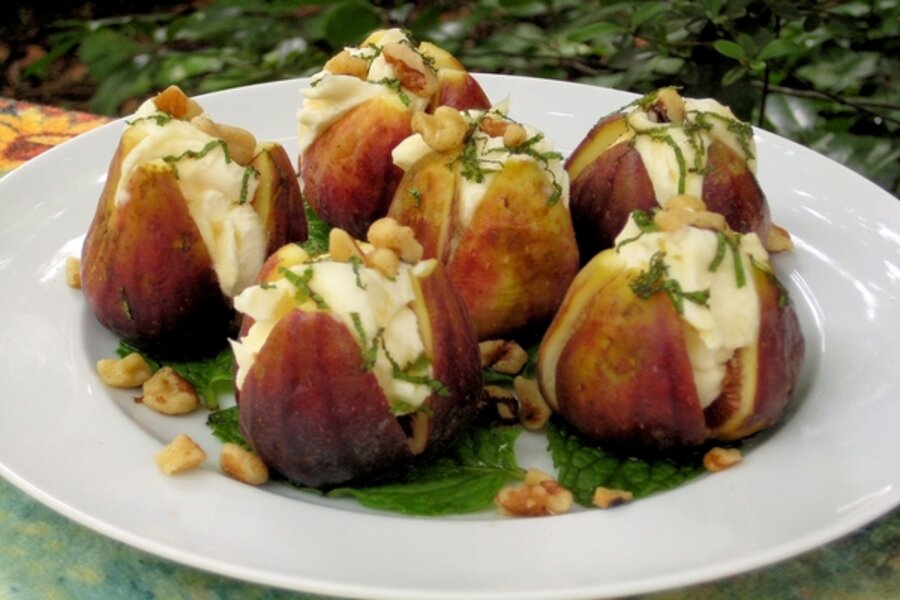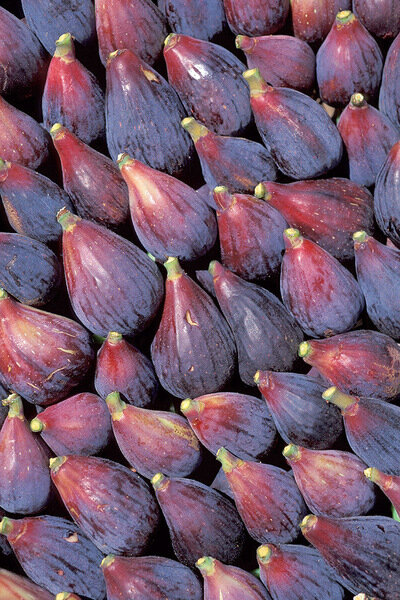How to grow and prepare figs
Loading...
It was only natural that I plant a fig tree when I moved to the South, says Anne, the gardener. What I didn’t know was I could have been growing a fruiting dwarf fig “up North” if I had planted it in a container and moved it indoors during the winter.
A dwarf black fig, Ficus 'Petite Negra,' is a fig bred just for containers. This fig grows to five feet tall and four feet wide. It has those bow-downs and bends in its branches that make it look old and charming.
Winter treatment
You can trim it back, if it won’t fit in your house when you take the container indoors for winter, but you will lose the first fruit set. Figs will set fruit on branch growth from the year before, called old wood. This is the first crop in the summer. It is also the crop most likely to be lost with a late freeze. A second, fall, crop develops on growth that occurs in the spring and summer, called new wood.
In hard-freeze areas, move the potted tree indoors after the first frost but before a hard freeze. The frost will send it into dormancy. Water it only occasionally through the winter. It will not need any fertilizer until late winter when new growth begins.
If you live in an area where the winter temperatures do not go below 20 degrees F. (7 C), you can leave this fig in the ground. Be sure to protect the roots from freezing with heavy mulch.
The fruit of fig trees is quite interesting. What we pick as fruit is swollen tree stem with flowers inside. The skin of the fruit on the dwarf black fig is green and turns purple/pink when it is ripe. The best ripeness test is a gentle squeeze. If the fig is soft, it's ready to eat. The flesh is deep pink and sweet.
Deer do not especially like figs but pocket gophers love the roots. To frustrate gophers, sink a wire basket into the planting hole or grow your figs in a container.
Beautiful mascarpone-stuffed figs
My grandfather introduced me to figs when I was about 2 years old, says Linda, the chef. He took me by the hand and we walked out to the giant fig tree in his backyard and ate ripe figs right from the tree.
I have had a love affair with figs ever since that day many years ago.
Some of my favorite fig preparations other than just off the tree are fig preserves and figs sautéed in sugar and lemon, served with honey yogurt, or as an elegant teatime dessert stuffed with sweetened mascarpone, mint, toasted walnuts, and drizzled with honey. Mmm, love.
You can use any kind of fig that you have available. Since figs ripen in different sizes, I have given estimates on how much mint, walnuts, and honey you might need. Add more or less as needed.
For an alternative to a cold dessert, there is the option of baking these beautiful figs for a warm dessert or even breakfast. Enjoy!
Mascarpone Stuffed Figs With Honey, Mint, and Walnuts
1 (8-ounce) container mascarpone cheese
1 tablespoon confectioners' sugar, or to taste
Figs -- as many as the cheese will stuff (depends on size of figs)
1 teaspoon orange-blossom honey per fig
1 teaspoon toasted walnuts per fig (toast for 1 to 2 minutes on a plate in the microwave)
Mint, in a fine chiffonade to sprinkle over figs
Soften the mascarpone cheese enough to mix with the confectioners' sugar.
Cut a cross in the top of each fig. Open them slightly so that you can stuff them with the cheese-sugar mixture using a pastry bag or spoon. After stuffing as many figs as you can use at the moment (see note below), drizzle each fig with honey, add toasted walnuts and sprinkle with the mint. Serve immediately.
Variation: If you would like these warm, leave off the mint and bake them in a preheated 350 degree F. oven until the figs are tender. The mascarpone melts into the softened, honey-sweetened figs and makes a wonderful, aromatic warm dessert or breakfast. Add mint after baking (optional).
Recipe note: The reason you stuff only as many figs as you will be using right away is that if you save them for another day, the figs become bitter.
Editor's Note: To read more of Anne and Linda's "how to grow and prepare" series, click here.
-----
Linda Weiss and Anne Moore met while Linda was the food editor and Anne was the garden editor for South Carolina Homes & Gardens magazine. They now write articles for the ETV GardenSMART television show website, where Anne is the horticulture editor, gardening consultant, and e-newsletter editor. Anne has written for magazines and newspapers. She is a member of and a recipient of a Silver Award for magazine writing from the Garden Writers Association. Linda is a personal chef. She attended Le Cordon Bleu of Paris’ catering program, has appeared as a guest chef on numerous television shows, has been a culinary educator for 10 years, and a food writer for a number of magazines. She is a professional member of The James Beard Foundation and the Southern Foodways Alliance. She has written a cookbook, "Memories From Home, Cooking with Family and Friends."






